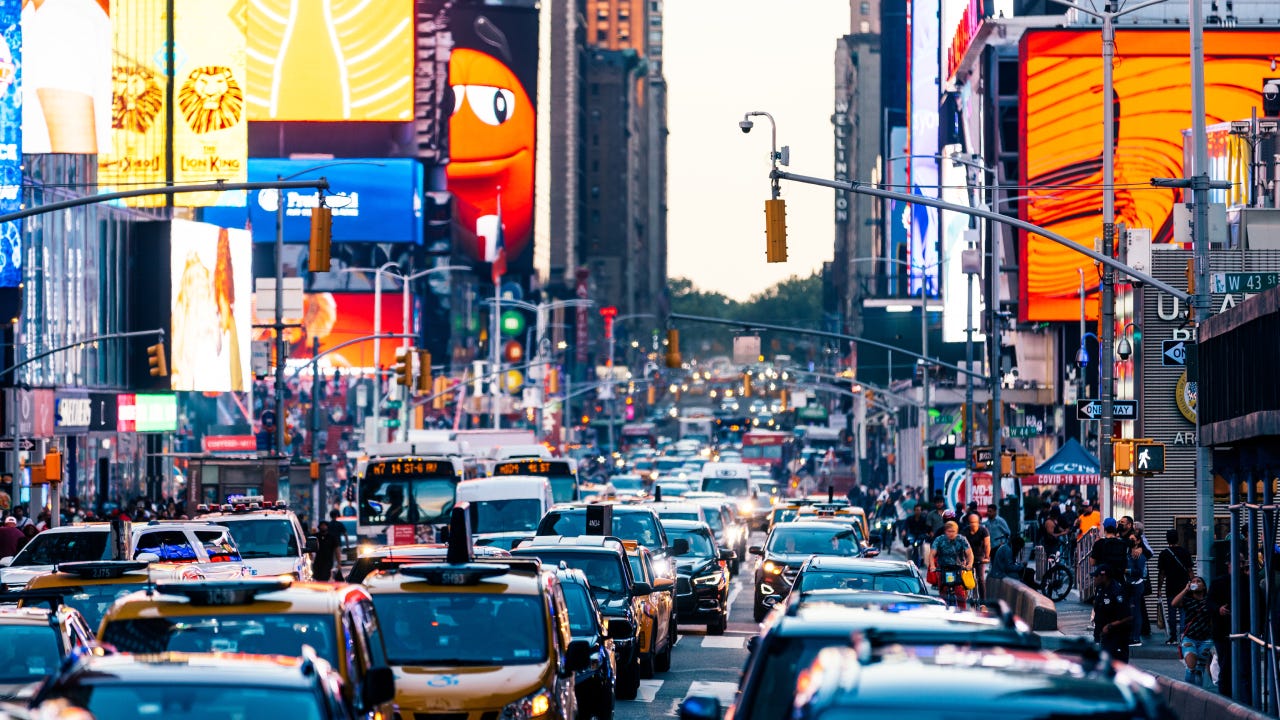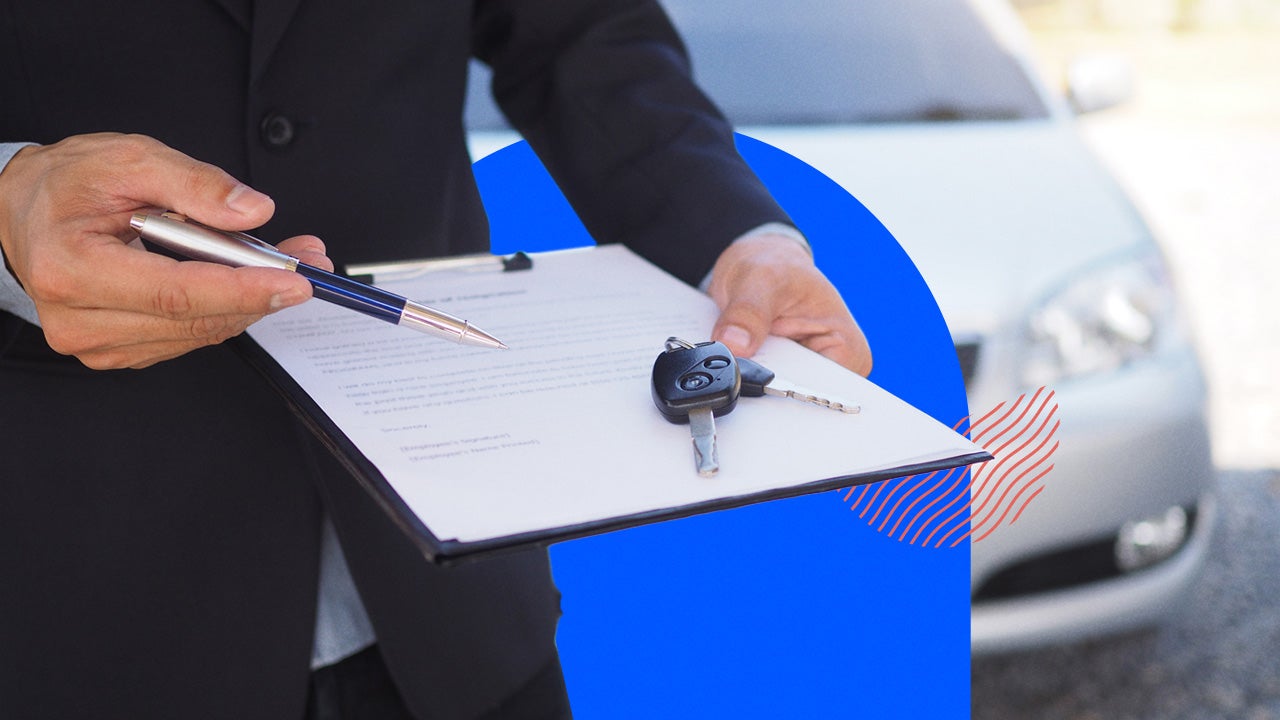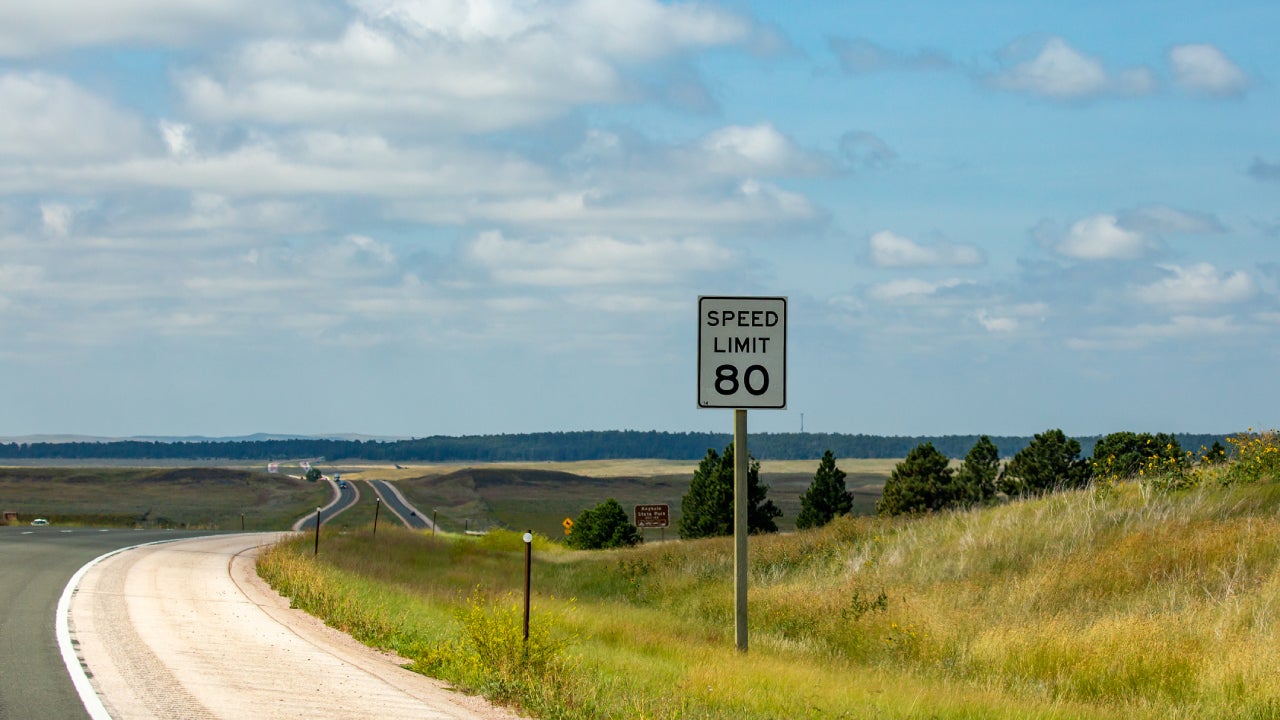Here’s how living in a tourist town could affect your auto insurance rates

Key takeaways
- Living in a tourist town can increase your car insurance rates
- Higher traffic and accident rates during tourist seasons impact premiums
- Theft and vandalism are more common in tourist areas, raising insurance costs
- Comparing quotes, bundling policies and maintaining a clean driving record can help lower your rates
Summer is a season of adventure, with countless travelers hitting the road to explore new destinations. While vacationers eagerly anticipate their visits to popular tourist towns, the residents who live in these areas experience a different reality. Living in a tourist town comes with its own set of pros and cons, and one significant consideration is the potential impact on car insurance rates in a tourist town.
At Bankrate, we understand the complexities of auto insurance and how various factors can influence your premiums. Our expertise in the field allows us to provide you with valuable insights into how living in a high-traffic, tourist-heavy area can affect your auto insurance costs. In this article, we’ll explore the unique risks associated with tourist towns and offer practical tips on how to manage and potentially lower your car insurance rates despite these challenges.
How does living in a tourist town affect your auto insurance rates?
Living in a tourist town can significantly affect your car insurance rates due to various risk factors that insurers consider when calculating premiums. The increased influx of visitors, especially during peak travel seasons, introduces several challenges that can drive up insurance costs.
One of the primary factors is the heightened traffic volume during popular travel times. For instance, AAA projected that 70.9 million travelers would head 50 miles or more from home over the Independence Day holiday travel period. This projection represents a 5 percent increase compared to 2023 and an 8 percent increase over 2019. With such a significant number of people on the road, especially in popular destinations like Dallas, Denver, Salt Lake City, Los Angeles and San Francisco, the roads in tourist towns become significantly busier, leading to a higher likelihood of accidents. This increased risk of collisions is a key reason why car insurance rates in tourist towns are often higher.
Seasonal variations also influence insurance rates. During peak tourist seasons, the risk of accidents, theft and vandalism can spike, leading to higher premiums. This trend is supported by data from the United Nations World Tourism Organization (UNWTO), which indicated that international tourism reached 88 percent of pre-pandemic levels by the end of 2023, with a full recovery expected by the end of 2024. As travel continues to bounce back, tourist towns experience increased visitor numbers, which exacerbates the associated risks and impacts insurance rates.
The combination of these factors means that auto insurers are likely to consider the increased claims during peak travel periods. This can translate to higher insurance premiums across the board, as insurers need to cover the potential increase in accidents and other incidents that occur during these times. By understanding these factors and keeping an eye on travel trends, residents can better anticipate changes in their insurance costs and find ways to manage them effectively.
Factors that affect your car insurance rates in a tourist town
Living in a tourist town brings a unique set of circumstances that can significantly influence your car insurance rates. From increased traffic, accidents and higher rates of theft, several factors come into play that can raise your premiums. Here’s a look at the key elements that impact auto insurance rates in a tourist town.
Location
The location of your residence plays a crucial role in determining your car insurance rates. Insurers use ZIP codes to assess various risk factors, such as population size, accident frequency and theft and vandalism rates. These factors are often amplified in tourist towns.
Tourist towns like New York City, Miami, Orlando, Los Angeles, San Francisco, Las Vegas, Washington D.C., Chicago, Boston and Honolulu often have higher car insurance rates compared to the national average, although some exceptions may exist. These areas often experience an influx of visitors, leading to denser traffic and a higher likelihood of accidents. Additionally, the presence of tourists increases the risk of theft and vandalism. Here’s a look at how these cities compare to the national average for car insurance.
| City | Avg. annual full coverage premium | National avg. full coverage premium | Percent difference |
|---|---|---|---|
| Boston | $2,067 | $2,311 | -12% |
| Chicago | $2,792 | $2,311 | +17% |
| Honolulu | $1,661 | $2,311 | -39% |
| Las Vegas | $3,641 | $2,311 | +37% |
| Los Angeles | $3,649 | $2,311 | +37% |
| Miami | $4,459 | $2,311 | +48% |
| New York City | $4,325 | $2,311 | +47% |
| Orlando | $3,388 | $2,311 | +32% |
| San Francisco | $3,016 | $2,311 | +23% |
| Washington D.C. | $2,520 | $2,311 | +8% |
*Rates as of June 2024
Some states, like Hawaii and Massachusetts, place certain restrictions on what factors car insurers can use to set pricing. These limitations are one reason why they may have lower average rates than their tourist town counterparts.
High-risk violations
Tourist seasons often see a rise in high-risk driving behaviors such as drunk driving and reckless driving. Even if residents are cautious, the presence of vacationers who may not be as familiar with local roads or who might engage in risky behaviors can lead to more accidents.
Statistics from recent years highlight this trend. In 2019, the National Highway Traffic Safety Administration (NHTSA) used historical data to forecast upcoming holiday driving fatalities. They concluded that:
- During the Fourth of July holiday period (July 3 to July 8, 2019), there would be 594 motor vehicle traffic crash fatalities.
- Over the Labor Day holiday period (August 30 to September 3, 2019), there would be 448 fatalities.
- The Thanksgiving holiday period would see 454 fatalities.
- The Christmas to New Year’s holiday period would see 799 fatalities.
These holiday periods, which coincide with peak tourist seasons, typically experience more alcohol consumption and risky driving behaviors. The increased travel time and excessive driving speeds contribute to the higher number of accidents. This trend is supported by data showing that average daily fatalities during major holidays are higher compared to non-holiday periods. For instance, in 2017, the average daily fatalities were 102, but this number rose to 119 during major holidays.
The impact of these incidents on insurance rates is substantial. The average national rate for car insurance increases significantly if there’s an accident on record. For instance, while the average annual premium might be $2,311 without an accident, it can jump to $3,299 with an accident on record, an increase of 43 percent. In tourist towns, this risk is compounded by the influx of visitors who might not be as careful or familiar with the roads.
Population size and density
The fluctuating population density in tourist towns during peak seasons can also impact traffic and accident rates. Tourist towns often see a sharp increase in population during holiday periods, which can lead to congested roads and a higher likelihood of accidents.
Living close to Yellowstone National Park, our roadways get a lot more crowded in the summer months. More drivers on the roads, combined with construction and wildlife crossing, leads to more accidents this time of year. I definitely keep a close eye out when driving near the park because even a not-at-fault accident could impact my rates.— Amelia Buckley, Insurance Editor for Bankrate
The demographic mix of tourists, including inexperienced drivers and those unfamiliar with local roads, further increases the risk of accidents. This variability is a significant factor that insurers consider when determining premiums in tourist towns.
Theft and vandalism
Due to the influx of visitors, tourist towns often experience elevated rates of car theft and vandalism. The presence of tourists, who may be perceived as easier targets, can attract criminals, leading to a rise in such incidents.
A study by Rob I. Mawby of the Rural Security Research Group highlights that tourism is closely linked to higher crime rates, including vehicle-related crimes such as theft and vandalism. The increased number of tourists can lead to a surge in property crimes, particularly in popular tourist destinations. The study indicates that while tourists are often victims, local residents are also affected by the heightened crime levels associated with tourism.
The relationship between tourism and crime is complex and varies by location. In some tourist hotspots, the influx of visitors leads to a significant increase in vehicle-related crimes, which directly impacts car insurance premiums for local residents. The risk of theft and vandalism is higher during peak tourist seasons when the number of potential targets and opportunities for crime increase.
Amelia Buckley further supports this by stating, “Unfortunately, vehicle break-ins increase in my area in the summer months because unsuspecting tourists can be easy targets. I am extra careful not to leave valuables in my car when parking in town this time of year.”
Insurers consider these heightened risks when setting premiums, leading to higher costs for residents. The increased likelihood of theft and vandalism during peak tourist seasons means that car insurance rates in these areas are often higher to cover the potential for increased claims.
How can you lower your auto insurance rates in a tourist town?
Finding cheap car insurance in a tourist town can be challenging, but it’s not impossible. By employing some strategic approaches, you can keep your premiums manageable despite the seasonal influx of visitors and increased risks. Here are some practical tips to help you secure affordable car insurance.
Shop around
One of the most effective ways to lower your auto insurance rates is to shop around and compare quotes from different insurers. Insurance companies use various methods to calculate premiums, and prices can vary significantly between providers. By obtaining multiple quotes, you can identify the most competitive rates and choose the best coverage for your needs.
Bundle your policies
Another effective way to lower your premiums is by bundling your auto insurance with other policies, such as home or renters insurance. Many insurance companies offer discounts for customers who have multiple policies with them. This not only simplifies your insurance management but can also lead to substantial savings.
Take advantage of discounts
Insurance companies offer a variety of discounts that can help lower your rates. These may include discounts for safe driving, completing defensive driving courses, having certain safety features in your vehicle or being a member of certain organizations. Make sure to ask your insurer about all available discounts and take full advantage of those for which you qualify.
Maintain a clean driving record
Maintaining a clean driving record is a great way to keep your insurance rates low. Avoiding accidents and traffic violations demonstrates to insurers that you are a low-risk driver, which can result in lower premiums. Even minor infractions can impact your rates, so it’s important to drive safely and responsibly.
Consider a higher deductible
Opting for a higher deductible can reduce your monthly premium. A deductible is the amount you pay out of pocket before your insurance coverage kicks in. By choosing a higher deductible, you assume more of the financial risk in the event of a claim, which can lower your insurance costs. However, make sure that you can comfortably afford the higher deductible amount in case of an accident.
Implementing these strategies can help you better manage your auto insurance rates in a tourist town. Taking the time to explore your options and make informed decisions can help lead to significant savings while ensuring you have the coverage you need.
Frequently asked questions
Methodology
Bankrate utilizes Quadrant Information Services to analyze June 2024 rates for all ZIP codes and carriers in all 50 states and Washington, D.C. Rates are weighted based on the population density in each geographic region. Quoted rates are based on a single, 40-year-old male and female driver with a clean driving record, good credit and the following full coverage limits:
- $100,000 bodily injury liability per person
- $300,000 bodily injury liability per accident
- $50,000 property damage liability per accident
- $100,000 uninsured motorist bodily injury per person
- $300,000 uninsured motorist bodily injury per accident
- $500 collision deductible
- $500 comprehensive deductible
To determine minimum coverage limits, Bankrate used minimum coverage that meets each state’s requirements. Our base profile drivers own a 2022 Toyota Camry, commute five days a week and drive 12,000 miles annually.
These are sample rates and should only be used for comparative purposes.
Credit-based insurance scores: Rates were calculated based on the following insurance credit tiers assigned to our drivers: “poor, average, good (base) and excellent.” Insurance credit tiers factor in your official credit scores but are not dependent on that variable alone. Four states prohibit or limit the use of credit as a rating factor in determining auto insurance rates: California, Hawaii, Massachusetts and Michigan.
Incidents: Rates were calculated by evaluating our base profile with the following incidents applied: clean record (base) and at-fault accident.
Status: Rates were evaluated based on the following marital/family status: single (base), married, 40-year-old married man and woman with a 16-year-old teen driver. Marital status is not a rating factor in Hawaii and Massachusetts.
Age: Rates were calculated by evaluating our base profile with the ages 18-60 (base: 40 years) applied. Depending on age, drivers may be a renter or homeowner. Age is not a contributing rating factor in Hawaii and Massachusetts due to state regulations.
Gender: The following states do not use gender as a determining factor in calculating premiums: California, Hawaii, Massachusetts, Michigan, North Carolina, Pennsylvania.
Why we ask for feedback Your feedback helps us improve our content and services. It takes less than a minute to complete.
Your responses are anonymous and will only be used for improving our website.
You may also like

Rental car insurance: Do you need it?

How a speeding ticket impacts your insurance in Wyoming




